A few years ago, I bought a 1629 Bible from an auction house, sight unseen (except for the title page). When I received it, I was astounded! There, before my eyes, was a perfectly preserved first edition Cambridge edition of the King James Bible – the New Testament (NT) and the Book of Common Prayer (BCP). In near-pristine condition! Hardly a mark or stain on it anywhere. A remarkable find, to be sure.
But my amazement was compounded by the discovery, throughout the NT, of over 110 full-page Old Master engravings dating, it turns out, from the later half of the 1500’s! Wow, I thought, this must be important! And indeed it is. I took the Bible to the Portland Museum of Art which put me in touch with an art historian professor at Willamette University, Dr. Ricardo De Mambro Santos, who specializes in this era of engravings. When he saw the engravings, he nearly fainted from joy. To see up close and handle so many historic engravings was overwhelming. “My friends!” he said, tapping his chest. There are works by Heemskerck, Galle, Cock, Wierix, Sadeler, de Vos, Goltzius, van den Broeck, and many more. We immediately agreed to an Exhibit and Lecture Series as soon as possible. But many questions needed to be answered regarding the Bible’s provenance and choice of engravings.
As it turns out – and this is the truly astonishing thing – to our knowledge, this is the only English Bible with engravings dating from the 16th century! [There are just a handful of early English Bibles with 17th century engravings.] 1660 marks the legalization of “pictures” in English Bibles. Our investigation showed that the BCP/NT was “married” to the engravings, very likely in 1660 or 1661, just prior to the introduction of the new BCP in 1662 which effectively made the “marriage” passe. Since it could no longer function as a bona fide “Prayer Book,” it was probably put back on the shelf for the next 350 years, which explains its near-pristine condition.
Internal evidence shows that the Prayer Book / NT, as it now stands, was likely “created” by Dr. George Ritschel, Sr., a Lutheran turned Anglican, an early Lecturer of Hexham Abbey in Northumberland, UK. The Bible was then passed down through the Sloughter and Robert Clarke family of Lecturers at Hexham Abbey during the early 1800’s. This historic Church, founded in 674, was at first a notable Benedictine Abbey, then in 1170 it became an Augustinian Priory, then in 1534 at the time of Henry VIII’s purges it transformed itself into the parish church of Hexham, to this day.
Because of this venerable provenance, we have dubbed the book “The Hexham Abbey Bible”.
An Exhibit and Lecture Series was held February 11 – April 29, 2018 — the first outing of this Bible. After much research by Professor Ricardo De Mambro Santos and Dr. Bruce T. Martin, The Hexham Abbey Bible, along with 35 similar engravings of the period, were exhibited at the Hallie Ford Museum in Salem, OR under the title: Holy Beauty: Northern Renaissance Prints Discovered in an Early English Bible. Several world renowned scholars participated in the Lecture Series.
The Hexham Abbey Bible is now available for sale. See the category “Rare Bibles” on this site. For more information, contact Dr. Bruce T. Martin, Historic Bibles & Engravings, at 541-990-9919.
Take a virtual tour of the Hexham Abbey Bible as presented at the Hallie Ford Museum

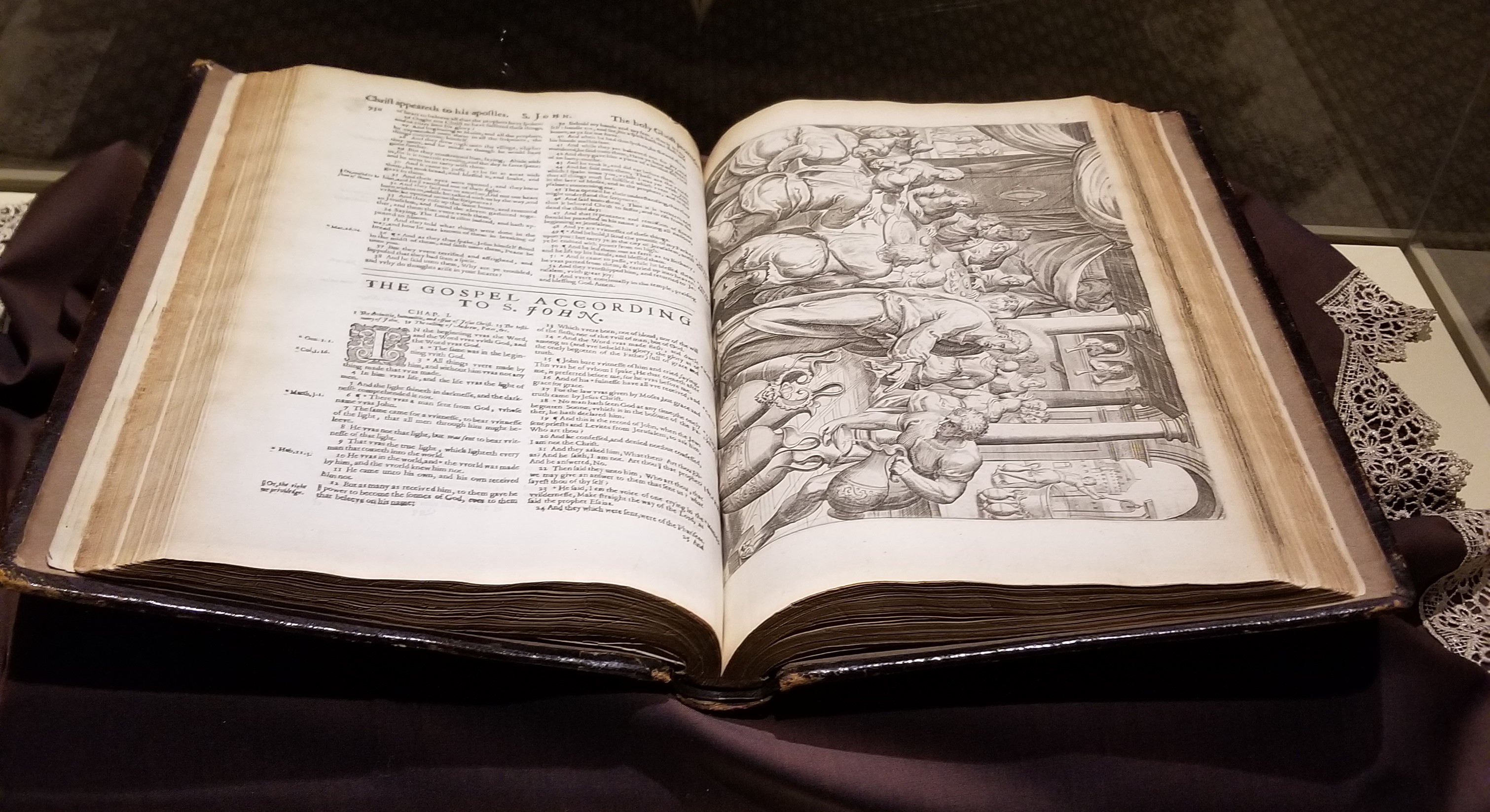
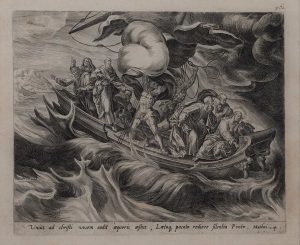
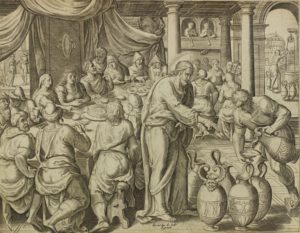
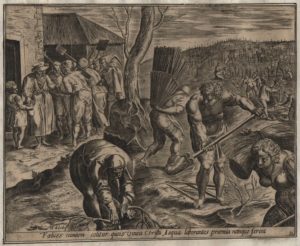
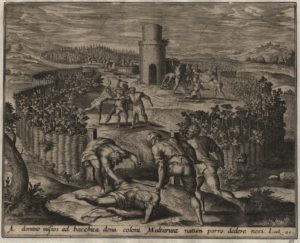
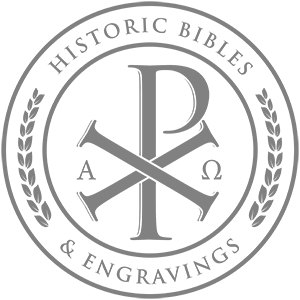


6 Responses to "Discovery and Provenance of the Hexham Abbey Bible"
Wow, what an amazing find! What does Hexham Abbey think about the bible?
Thanks for looking at this unique find. So far, Hexham Abbey has not responded to any of my inquiries, as to provenance or interest. [P.S. I was contacted in early October by Dr Thomas Kelsey of the Conservation Advisory Board, which I have since learned is connected to Hexham Abbey, expressing interest in the Bible but there was no information about the Bible’s provenance.]
I’ve been looking at your engravings on your site. Are all of these from the Hexham Abbey Bible?
Only a few of the engravings pictured or listed on this site are actually in the Hexham Abbey Bible. Those of course cannot be sold because they must remain in the Bible itself. However, duplicates of some Hexham Abbey Bible engravings are pictured and are for sale; each is an original and not a copy. These are noted under their “descriptions.”
Contributors to this conversation may also be interested to know of two publications by Hexham Local History Society: “A pack of idle sparks: letters from Hexham on the Church, the People, Corruption & Scandal, 1699-1740” Edited by Greg Finch and available on Amazon, this is a collection of letters from George Ritschell Jnr, the son of the owner of the “Hexham Abbey Bible” and like his father, Rector of the Abbey, and his successor Thomas Andrewes. Both men complain bitterly about their congregants to the bishop; the book’s title being a quote from one of the letters!
The other publication is an article in our annual journal, the Hexham Historian 24, also by Greg Finch, about the senior Ritschell’s attempts to acquire a scholarship to Corpus Christi College at Oxford for his son, in the face of opposition from the college authorities. The article’s title “Unfit for the employment our founder designs us to” giving some indication of the opposition he met! Copies of both book and article can also be obtained by contacting sales@hexhamhistorian.org
Thank you, Mark. I understand that Finch’s “Pack of Idle Sparks” also includes a chapter on the elder Ritschel, the one who very likely “married” the Bible to the engravings back in 1660-61. As part of the Exhibit and Lecture Series, Dr Ricardo De Mambro Santos is working on what influenced Ritschel Sr to undertake such a marriage. I look forward to it!